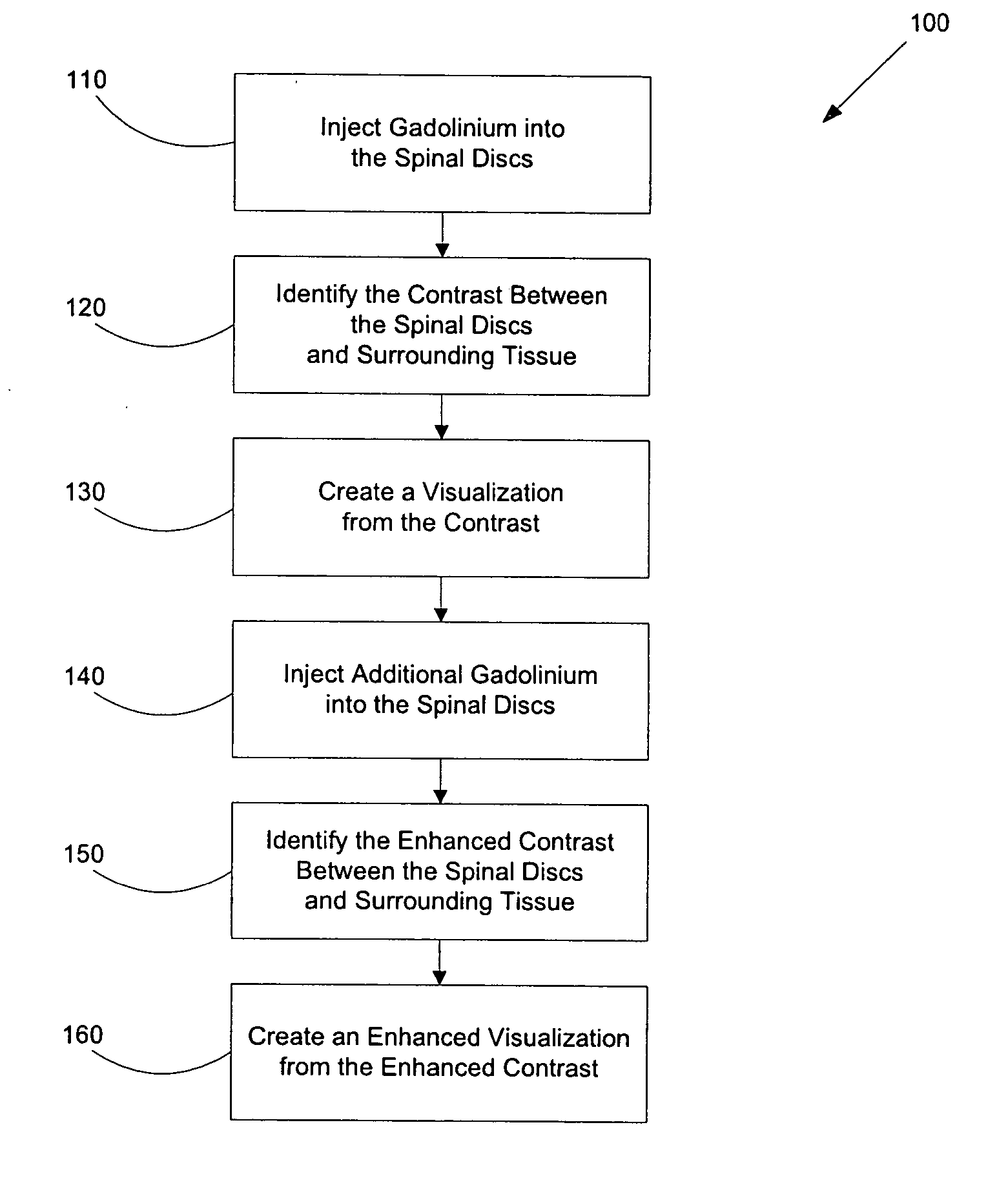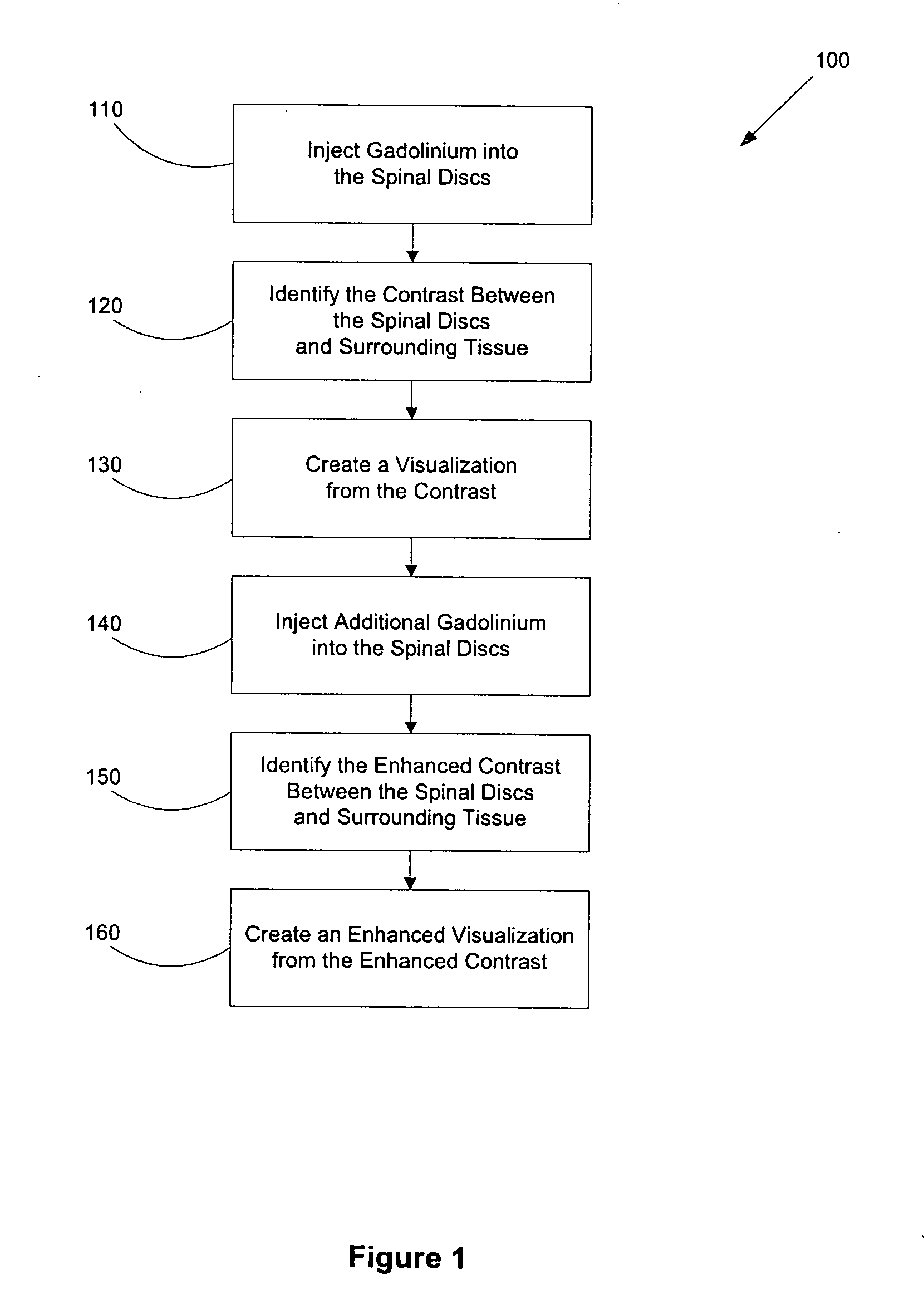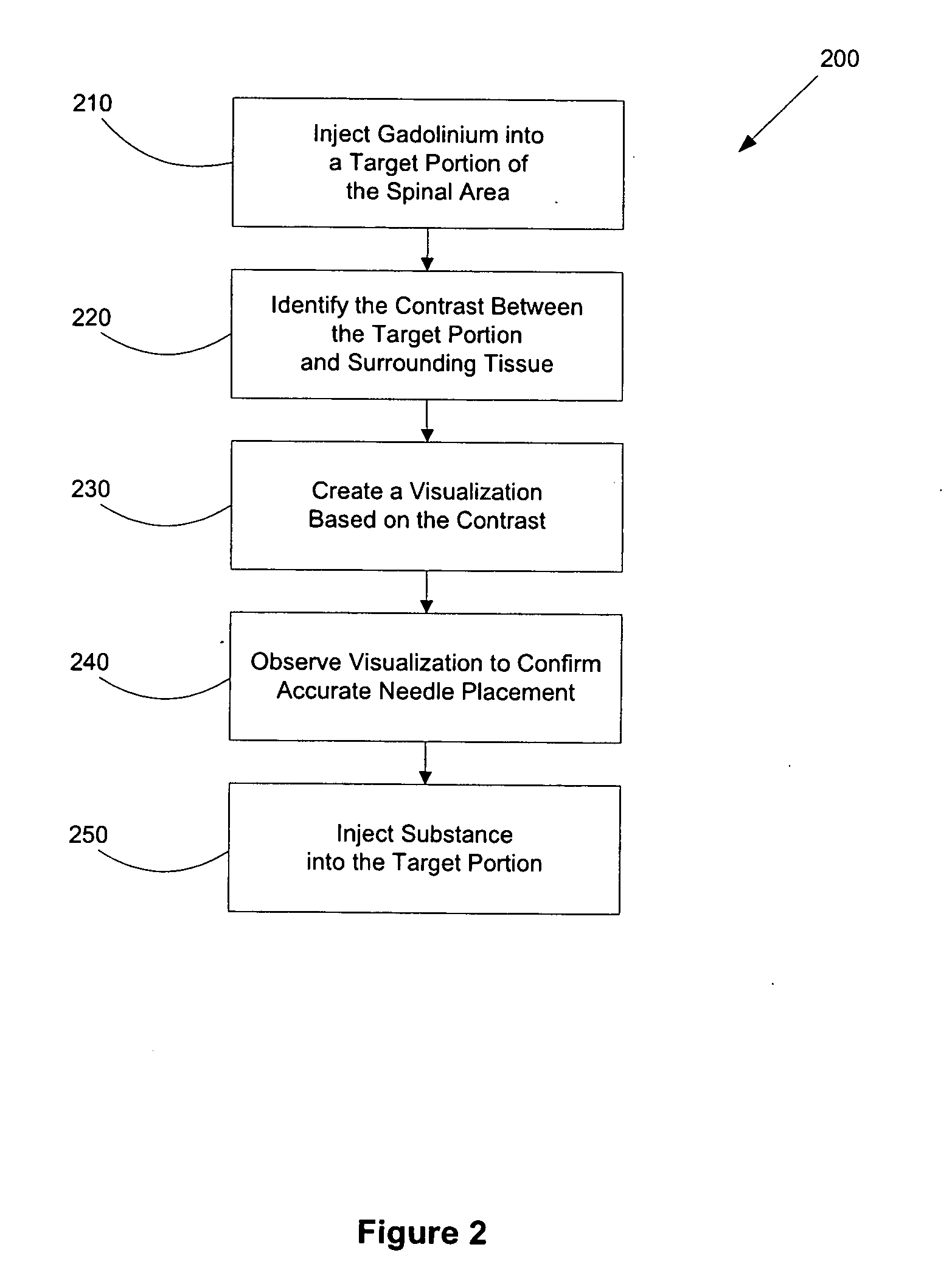Methods for using gadolinium as a contrast media
a technology of contrast media and gadolinium, which is applied in the field of methods for using gadolinium as a contrast media, can solve the problems of insufficient imaging, inability to interpret spinal disc problems, and axial low back pain, and achieve enhanced contrast, enhanced visualization, and enhanced contrast
- Summary
- Abstract
- Description
- Claims
- Application Information
AI Technical Summary
Benefits of technology
Problems solved by technology
Method used
Image
Examples
case 1-1
Case 1-1
[0031] A forty-three-year-old female patient was scheduled for lumbar discography after presenting chronic axial low back pain, as a result of a slip and fall, that had failed to improve with time. Conservative measures such as chiropractic treatments and physical therapy had been unsuccessful. A history before the procedure revealed an anaphylactic reaction to shellfish / iodine that precluded use of iodinated contrast substances during the procedure. Although medical prophylaxis against anaphylaxis was an option in this case, it was decided to proceed with discography using gadolinium as a contrast substance.
[0032] The volume of contrast injected at pain onset, the end point (nucleography), the pain intensity measured with the numerical analog scale, and the concordant and / or discordant pain response were recorded for each spinal disc to be injected with gadolinium. Each spinal disc then was visualized with c-arm fluoroscopy to create a visualization of the nucleogram and p...
case 1-2
Case 1-2
[0035] A forty-six-year-old female patient was scheduled for lumbar discography because of chronic axial low back pain. The patient of case one-two was allergic to iodinated contrast material. Once again, in lieu of prophylactic measures for contrast allergy, gadolinium was chosen to facilitate visualization of the structure of the spinal discs and provocation of the spinal disc for pain. There was adequate pain provocation and no complications occurred. Discography was performed in a manner similar to case one-one.
[0036] Fluoroscopic imaging at the time of disc injection was suboptimal in both the anteroposterior and lateral views because of body habitus. Visualization of the contrast at the L3-L4 spinal disc showed a very distinct normal nucleogram without annular disruption. Due to annular disruption, the L4-L5 and L5-S1 spinal discs retained only very small amounts of gadolinium, experiencing gadolinium run-off. However, injection of additional gadolinium enhanced the q...
case 1-3
Case 1-3
[0037] A thirty-five-year-old female patient was scheduled for lumbar discography because of chronic axial low back pain that had failed to improve with conservative care. A history before the procedure showed anaphylaxis with administration of iodinated contrast material. Because of the severe nature of her allergy, and because the patient had not had prophylaxis before the procedure, it was decided to proceed with gadolinium-based discography followed by a post-procedure scan.
[0038] Discography was performed in the same manner as described for the patient of case one-one and there were no complications. Adequate pain provocation was accomplished during the study. The discs were injected with gadolinium and fluoroscopic imaging at the time of injecting the gadolinium showed a distinct normal nucleogram of the L3-L4 spinal disc without annular disruption. Similar to the patients of cases one-one and one-two, annular disruption resulted in gadolinium run-off and a faint nucl...
PUM
 Login to View More
Login to View More Abstract
Description
Claims
Application Information
 Login to View More
Login to View More - R&D
- Intellectual Property
- Life Sciences
- Materials
- Tech Scout
- Unparalleled Data Quality
- Higher Quality Content
- 60% Fewer Hallucinations
Browse by: Latest US Patents, China's latest patents, Technical Efficacy Thesaurus, Application Domain, Technology Topic, Popular Technical Reports.
© 2025 PatSnap. All rights reserved.Legal|Privacy policy|Modern Slavery Act Transparency Statement|Sitemap|About US| Contact US: help@patsnap.com



